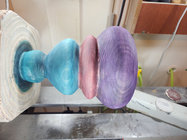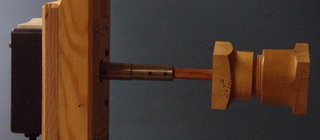I usually use spray lacquer, but the shape of this piece has proved tricky to spray evenly and I want to try brushing lacquer. I have never used brushing lacquer and I have not found many tutorials online about using it in wood turning. I will be using Deft Gloss Brushing lacquer. I am wondering things like should I dilute it to 50/50 or use it straight from the container? Should the lathe be moving fast or slow? Use a brush or a rag? How long should I let it dry in between coats. Any other tips?
thanks,
Dan

thanks,
Dan


